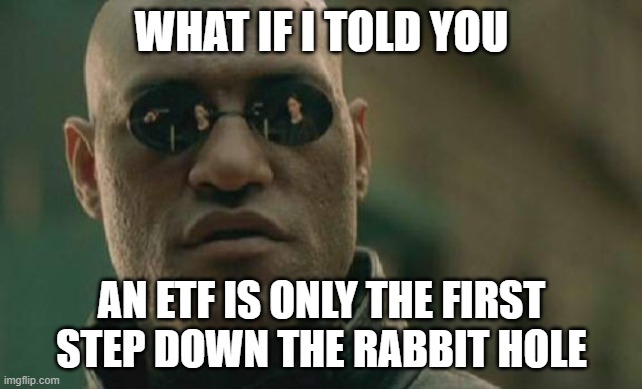
Bitcoin self-custody still matters
See Part 1 of my Bitcoin ETF analysis for why the introduction of a Bitcoin ETF will likely be an important step forward for the industry.
Bitcoin was designed as a trustless, decentralized network on which anyone could self-custody their own assets. While this does go against the custody solutions provided by an ETF, introducing Bitcoin to new market entrants through an ETF could easily lead them down the Bitcoin rabbit hole toward self-custody solutions.
A roadmap from ETF customer to self-custody Bitcoin user
There’s a world in which the roadmap for Bitcoin ETF customers could look something like this:
1. Media-supported buying
“I heard about this Bitcoin ETF on CNBC, so I figured it wouldn’t hurt to buy a few shares.”
Media outlets have already been talking about a Bitcoin ETF for months, and once it’s approved, coverage will only increase. It won’t take long before the average investor with little-to-no Bitcoin knowledge buys a few shares of an ETF for both the exposure and FOMO.
2. Number go up
“Wow, Bitcoin is outperforming my other assets.”
Numbers don’t lie. Over the long run, the value of bitcoin has been proven to grow, and when it does, ETF investors will take notice.
3. Curiosity saved the cat
“That’s odd. Bitcoin is continuing to hold strong while the rest of my portfolio is declining. I wonder why that is?”
It’s an inevitability that ETF holders would seek to learn more about Bitcoin as their wealth increases. And as their wealth rises, holders will start to get curious about what Bitcoin really is, how it works, and why it’s different than other assets.
4. A crash course in Bitcoin
“Ok, this Bitcoin thing is actually kind of cool. Where can I learn more?”
This is where it starts to get fun. There are any number of paths an uninitiated Bitcoin ETF-holder could go down when starting their education. It could be a podcast like What Bitcoin Did, a book like The Bitcoin Standard, or following Bitcoiners like Jameson Lopp on Twitter (sorry, X).
5. The self-custody realization
“Now that I understand Bitcoin better, I should probably look into self-custody. After all, not your keys, not your coins.”
After learning why Bitcoin is different and how self-custody is available to anyone, it’s not a stretch to think the ETF holder will begin to examine self-custody solutions, whether through hardware wallets, multi-sig solutions, or other forms.
We should feel grateful for ETFs entering the space. It will provide more opportunities to onboard users to the hardest money ever created. But it will be our job as Bitcoin marketers to educate consumers on the benefits and ease of moving from a centralized ETF to self-custody.
